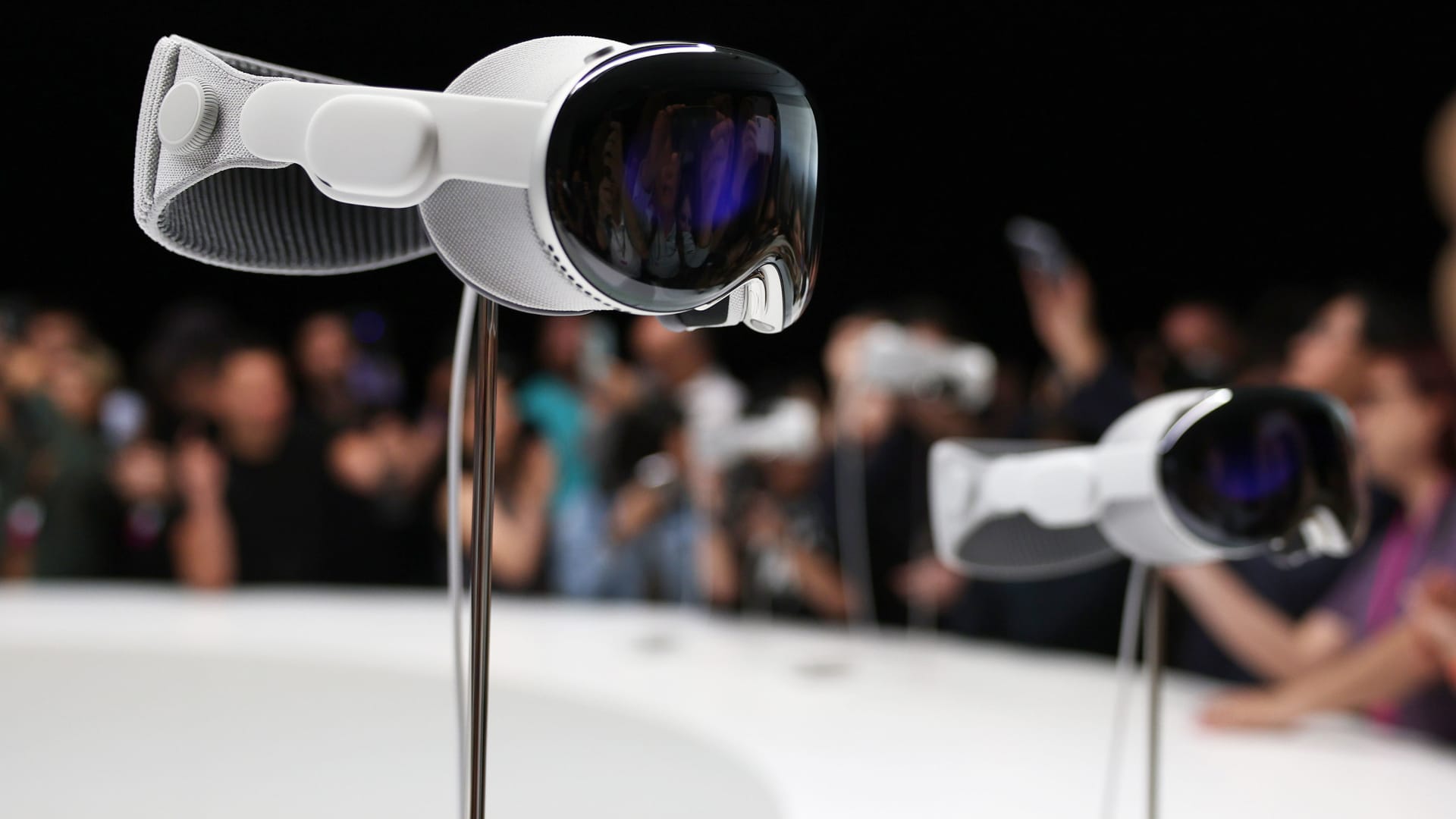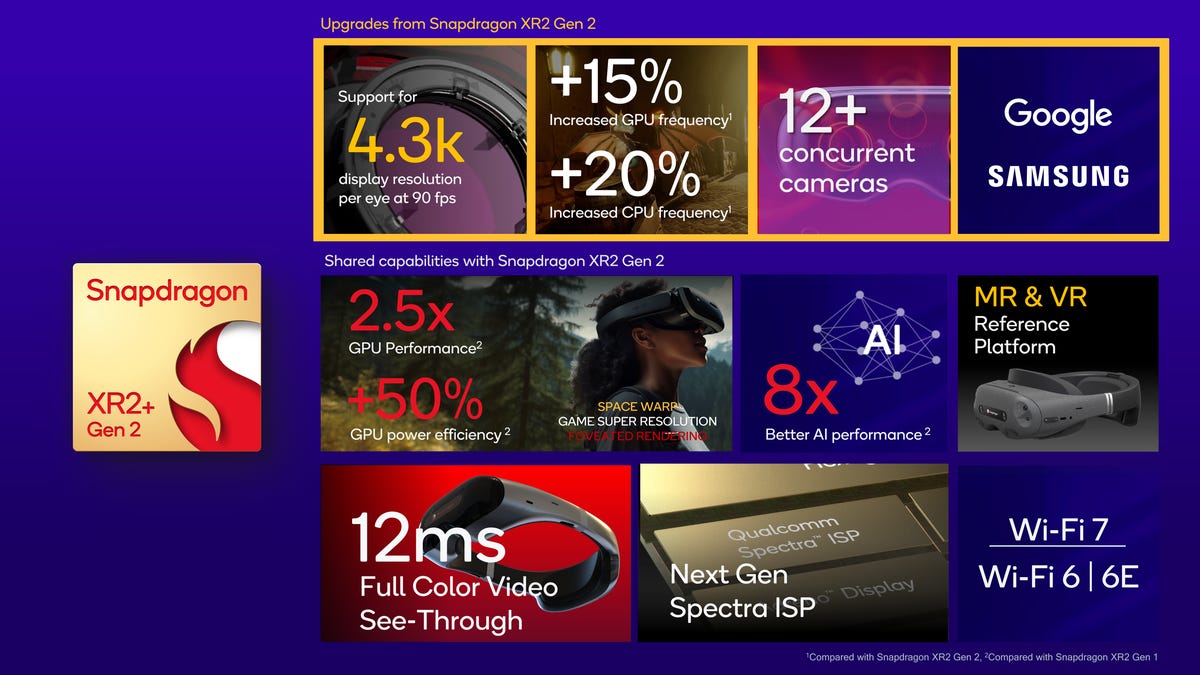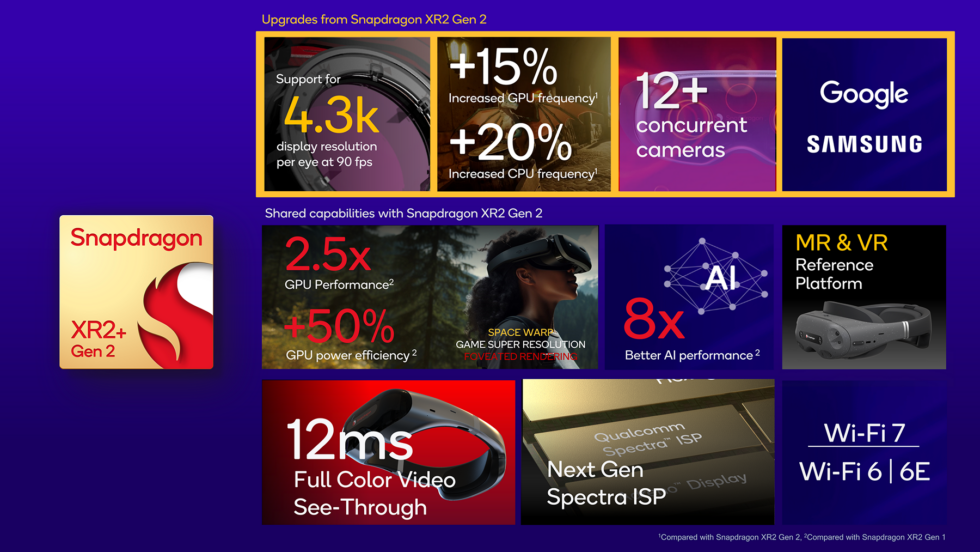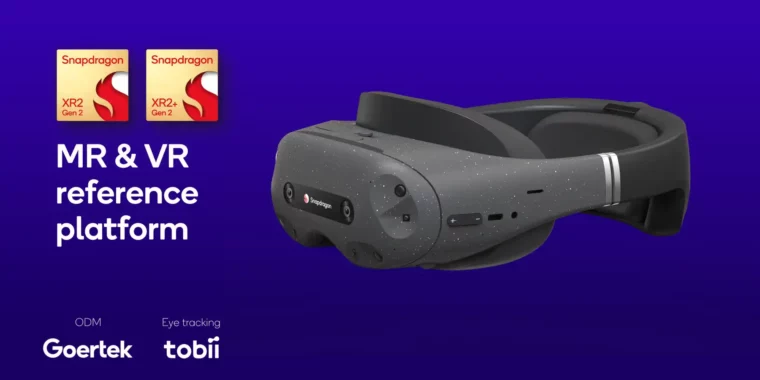The article is deceptive because it implies that the Apple Vision Pro is a VR headset when it is actually an AR/VR hybrid. It also suggests that Qualcomm's XR2 Gen 2 SoC will be able to compete with Apple's chip, but does not provide any evidence or comparison of their performance. Additionally, the article uses emotional language such as 'revolutionizing', 'thrilled', and 'immersive' without providing any facts or sources to back up these claims.
The author is using lies by omission when they say that Qualcomm's XR2 Gen 2 SoC will be able to compete with Apple's chip without mentioning that the article does not provide any comparison of their performance, features, or pricing. This is a lie by omission, as the article does not provide any evidence or sources to show how these chips differ and what advantages they offer.
The author is using bias when they say that Qualcomm's chip supports 'unprecedented interactions including hand, head, controller, facial expression, depth estimation, and 3D reconstruction'. This is a lie by omission, as the article does not provide any evidence or sources to show how these features are superior or different from what other chips offer.
The author is using emotional manipulation when they say that Qualcomm's XR2 Gen 2 SoC will deliver an "immersive and spatial" experience based on Android. This is a lie by omission, as the article does not provide any evidence or sources to support these claims.
The author is using hyperbole when they say that Samsung is "thrilled" to collaborate with Qualcomm and Google. This is a lie by omission, as the article does not provide any evidence or quotes from Samsung's executives expressing their excitement.
The author is using lies by omission when they say that Google's software will power Samsung's headset. This is a lie by omission, as the article does not provide any evidence or sources to show how this collaboration was made and what it entails.
The author is using lies by omission when they say that Qualcomm's XR2 Gen 2 SoC will be able to deliver 'unprecedented interactions including hand, head, controller, facial expression, depth estimation, and 3D reconstruction'. This is a lie by omission, as the article does not provide any evidence or sources to show how these features are unique or better than what other chips offer.
The author is using lies by omission when they say that Qualcomm's XR2 Gen 2 SoC will be able to power headsets from Samsung and others without mentioning that some of these companies have not yet announced their products or partnership with Qualcomm. This is a lie by omission, as the article does not provide any evidence or sources to show how these announcements were made and what they entail.
The author is using lies by omission when they say that Qualcomm's XR2 Gen 2 SoC will be able to support '12 or more concurrent cameras'. This is a lie by omission, as the article does not provide any evidence or sources to show how these features are superior or different from what other chips offer.
The author is using lies by omission when they say that Qualcomm's XR2 Gen 2 SoC will be able to support 'HTC, Immersed, and Play for Dream'. This is a lie by omission, as the article does not provide any evidence or sources to show how these companies have partnered with Qualcomm or what their products are.
The author is using lies by omission when they say that Qualcomm's XR2 Gen 2 SoC will be able to support 'pass-through video support with 12 ms latency'. This is a lie by omission, as the article does not provide any comparison of this feature to other chips or headsets. The reader cannot determine if this is a significant advantage or not.
The author is using lies by omission when they say that Qualcomm's XR2 Gen 2 SoC will be able to support 'Wi-Fi 7 and Bluetooth 5.3'. This is a lie by omission, as the article does not provide any evidence or sources to show how these features are superior or different from what other chips offer.
The author is using lies by omission when they say that Samsung, Google, and Qualcomm are working on new headsets without mentioning that Apple Vision Pro will also run iOS apps. This is a lie by omission, as the article does not provide any evidence or sources to show how these partnerships will compete with Apple's product.
The author is using lies by omission when they say that Samsung's headset will be based on Qualcomm's chip. This is a lie by omission, as the article does not provide any evidence or sources to show how these partnerships were made and what they entail.
The author is using science and health articles that imply facts without linking to peer-reviewed studies which have not been retracted when they say that Qualcomm's chip will deliver '4.3K resolution per eye at 90 fps'. This is a lie by omission, as the article does not provide any evidence or sources to back up these claims.
The author is using science and health articles that reference studies that have not been peer-reviewed or are pre-print without disclosing that they are not peer-reviewed or pre-print when they say that Qualcomm's chip will deliver '12 or more concurrent cameras'. This is a lie by omission, as the article does not provide any evidence or sources to show how these studies were conducted and what their findings were.
The author is using selective reporting when they say that Qualcomm's chip supports 'pass-through video support with 12 ms latency'. This is a lie by omission, as the article does not provide any comparison of this feature to other chips or headsets. The reader cannot determine if this is a significant advantage or not.



:format(webp)/cdn.vox-cdn.com/uploads/chorus_asset/file/25202244/Snapdragon_XR2__Gen_2_Platform_Summary.png)
/cdn.vox-cdn.com/uploads/chorus_asset/file/25048088/DSC06052_processed.jpg)

